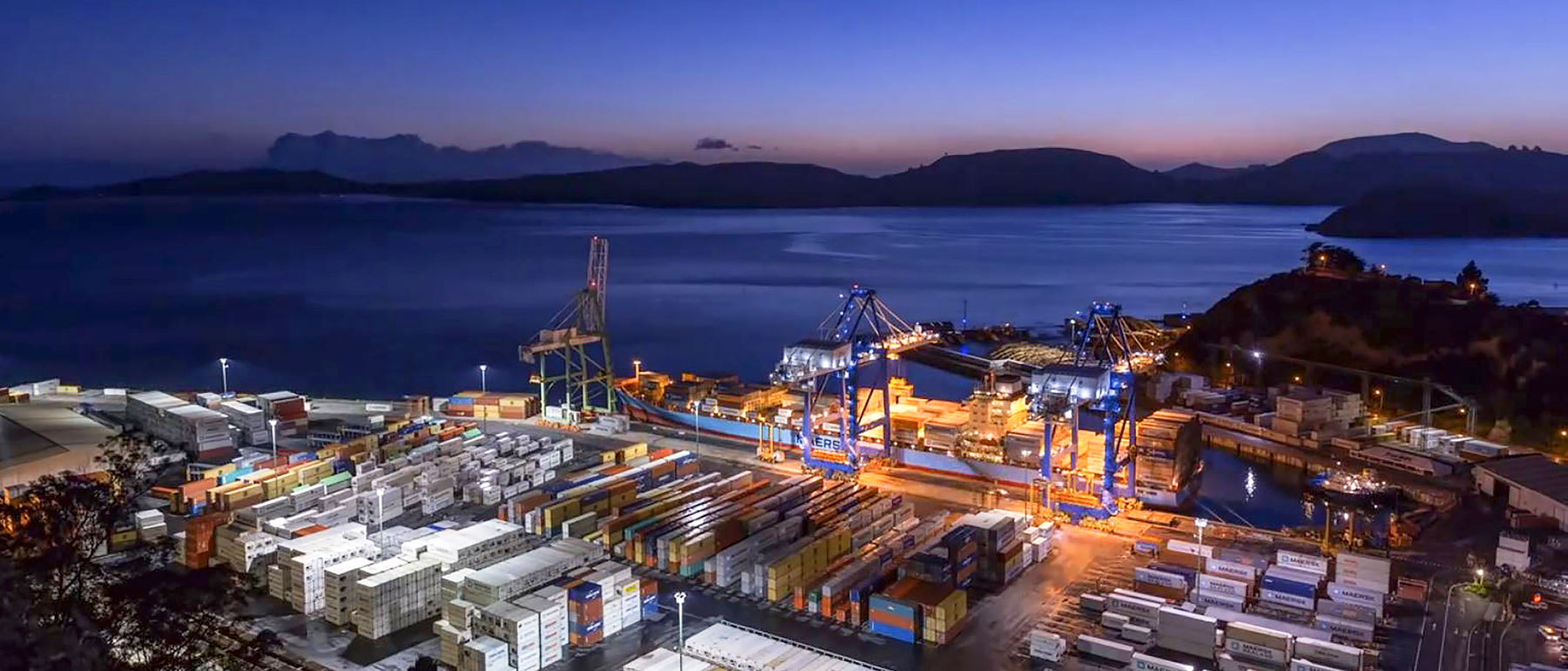Noise produced from Port Otago operations

Noise produced by Port Otago’s operations is divided into two types:
1. Port Hum (or noise floor)
The ‘hum’ of the port relates to the ongoing rumbles and noises made by ships, vehicles and machinery at the port. This is represented by the port noise contours. Port noise contours are maps that visually represent predicted noise levels generated by port activities, such as ships berthing and cargo handling, in and around a port area. These contours help identify areas potentially impacted by port noise, such as residential areas, and are used to manage and mitigate noise. In recent times, most ship noise complaints have related to the low frequency ‘rumble’ originating from the funnel exhaust on the auxiliary engines used to keep chilled and frozen exports at temperature onboard the vessel. This ‘rumble’ can be 10-15 decibels louder than the noise generated by a typical ship and heard from a considerable distance away.
2. Bangs and Crashes
These are the intermittent noises you hear when containers and logs are being moved around. These are managed by the Port Noise Management Plan, including through operator training, planning and time restrictions on noisy activities. Typically, these do not occur often enough to significantly affect the noise contours.